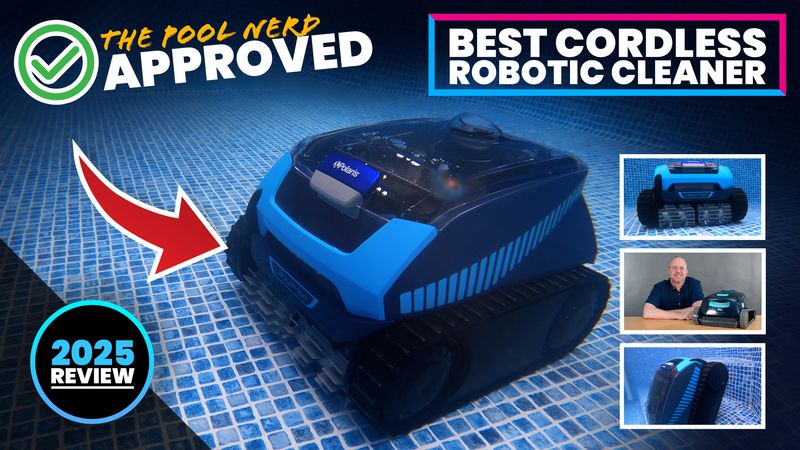Wanting to find the best cordless robotic pool cleaner? Well, I Tested All the Top Cordless Pool Cleaners—And I Wouldn’t Recommend Any of Them.

So, you’re eyeing a cordless robotic pool cleaner? I get it. No cords, no hassle—just drop it in and let it do the work. Sounds like a dream, right? Yeah… that’s what I thought too.
But let’s talk about reality. Because while the idea of a cordless pool robot is great in theory, in reality? Not so much. Some owners swear by them, but plenty regret their choice—including me. From the headache of constant recharging to reports of house fires, there’s a lot you might not know about cordless pool robots. So let’s dive in.
If you’re new to The Pool Nerd, I’m Justin, your resident pool aficionado. I’ve tested over 30 robotic pool cleaners, from budget-friendly $100 cordless models to $2,000 commercial-grade robots. I’ve put them through real-world tests in my own pool, combed through customer reviews, and even dug into Mozilla’s Fakespot ratings (spoiler alert: a lot of these cordless models got F Grades).
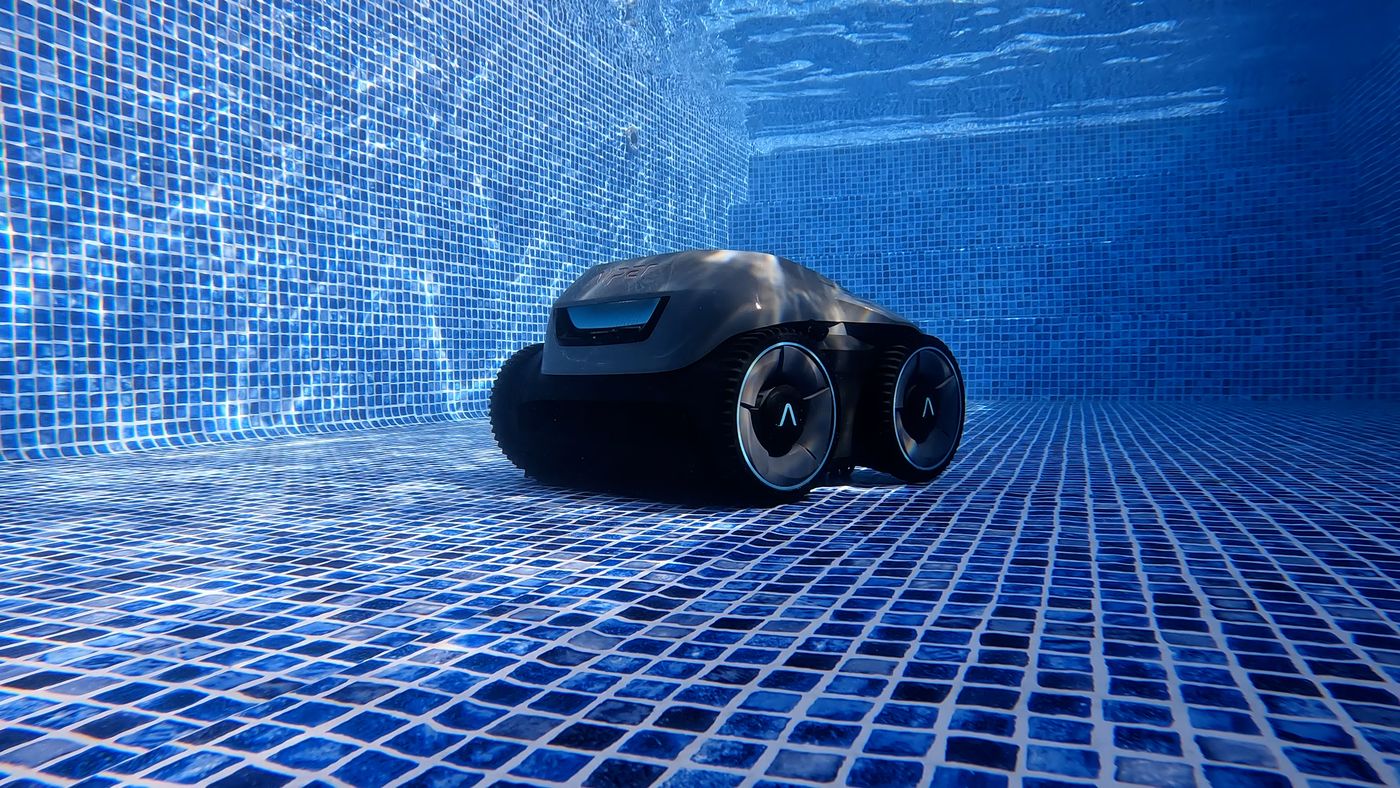
And after all that? I still can’t confidently recommend a single one of them over corded models. Between the:
-
Fire Risks
-
Short Battery Life
-
Constant Recharging
-
And Weak Suction Power
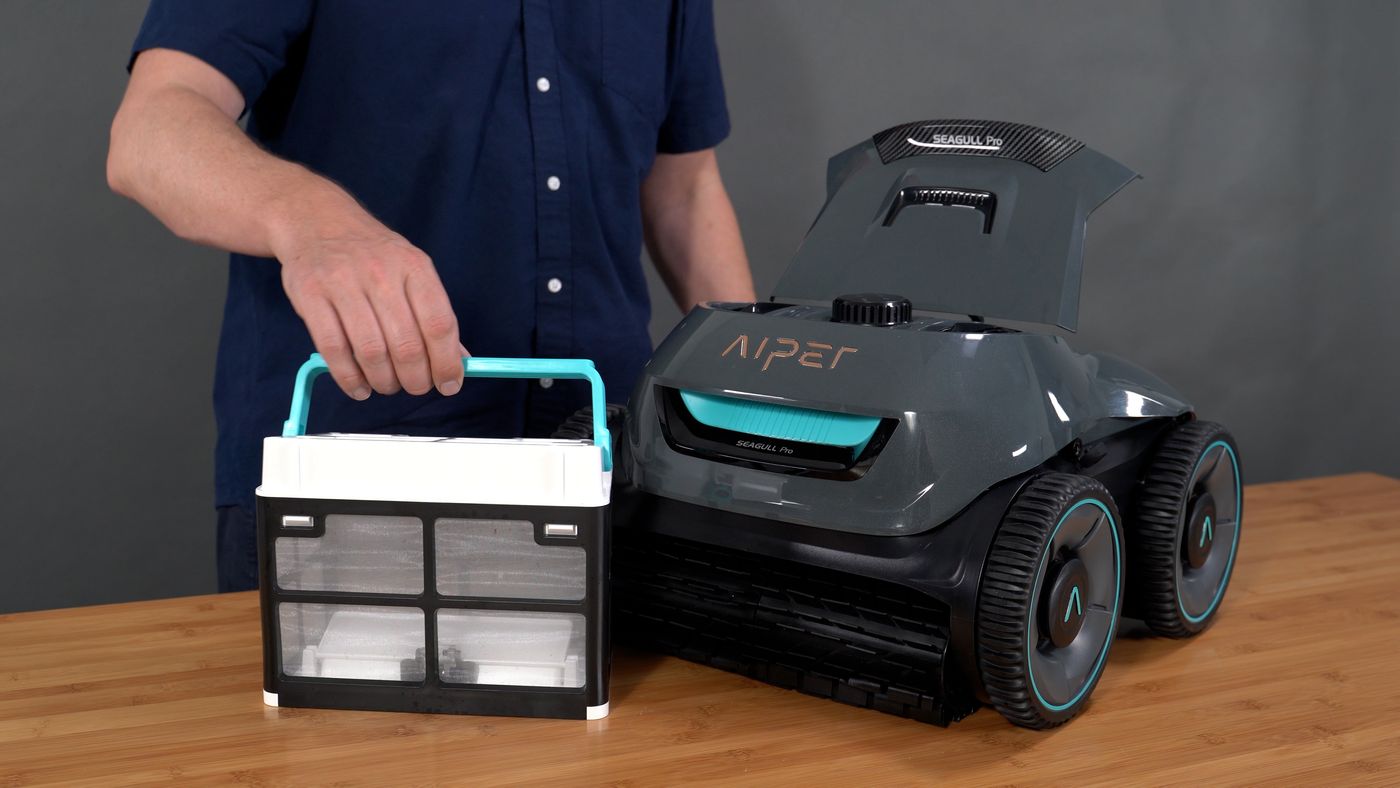
From Aiper to Beatbot, I've reviewed all the top models // The Pool Nerd
I wouldn’t prefer a single one over a corded pool cleaner.
But here’s the deal—if you’re dead set on going cordless, I’ll show you the best options out there. In this guide, I’ll walk you through the top cordless robotic pool cleaners and the trade-offs you need to be aware of before you make a decision you might regret.
Want the best of the best? Read the Best Robotic Pool Cleaner of 2025
After testing nearly 30+ robotic pool cleaners in my pool, I'll let you know what to look for and what to avoid.
Why Are There So Many Cordless Pool Robots?
Scroll through Amazon, and you’ll see them everywhere. Why? Simple. They’re cheaper and easier to produce. Chinese manufacturers love cheap and easy. Ditching the power supply, the cord, and the swivel means manufacturers can cut corners, and a lot of them do—especially with the batteries.

That’s where things get risky. Weak batteries don’t just mean shorter run times and low suction power; they also come with overheating issues. And in some cases? Full-on fire hazards.
Read more on the alleged Aiper Seagull Pro House Fires →
Why You Might Regret Buying a Cordless Pool Cleaner
At first glance, a cordless pool cleaner looks great—no tangled cords, a sleek design, and the promise of a crystal-clear pool. But once you start looking beyond the marketing, the reality can be a lot less appealing. Before you take the plunge, let’s break down the biggest issues with cordless models and why they often leave pool owners frustrated.

Battery Life: The Biggest Letdown
Cordless pool cleaners live and die by their battery life—literally. Most of them only run for 60 to 90 minutes on a full charge, and that’s under ideal conditions. If you’ve got a medium-to-large pool that needs a full floor-to-wall scrub, don’t be surprised if your cleaner taps out before finishing the job.
One thing a lot of people don’t think about before buying a cordless pool cleaner? You have to pull it out of the pool. Every. Single. Time.
Unlike a Roomba or a home vacuum that parks itself on a charging dock, a cordless pool cleaner doesn’t have that luxury. It doesn’t drive itself back to the edge and recharge itself. Nope—you’re the charging dock. That means after every cleaning session, you have to wade in, grab the handle, and haul a waterlogged, 25-pound machine out of the deep end. And let me tell you—it’s not exactly fun.
And since the battery life isn’t great, you’re doing this at least twice a day if your pool actually needs a full clean.
Picture this: your pool has tons of leaves, bugs, and debris every day. Your cordless robot goes in, scrubs a bit, then dies before finishing the job. Now you wait hours for it to recharge, drop it back in, and cross your fingers that it doesn’t run out of juice again before covering the rest.
Instead of automating your pool maintenance like you can with a Weekly Smart Timer on a corded model, you’re stuck micromanaging a pool robot that was supposed to make your life easier.
And here’s the kicker: batteries degrade over time. After a few months, you might lose 10, 20, even 30 minutes of runtime. Suddenly, that cleaner that barely finished before is now stopping halfway through. Fast forward a year or two, and you’re stuck with a robot that already needs replacing.

Reduced Suction Power and Performance
Here’s something cordless pool cleaner manufacturers won’t put on the box—your cleaner loses power mid-cycle, and it shows.
To conserve battery life, most cordless robots run with smaller motors that don’t generate nearly as much suction or scrubbing force as their corded counterparts. If you’ve ever used a weak handheld vacuum, you already know the frustration. The flow rate—measured in gallons per hour (GPH)—on many cordless models is half, sometimes even a third, of what you’d get from a corded cleaner. And when pool pros recommend at least 4,000 GPH for a proper clean, that’s a problem.
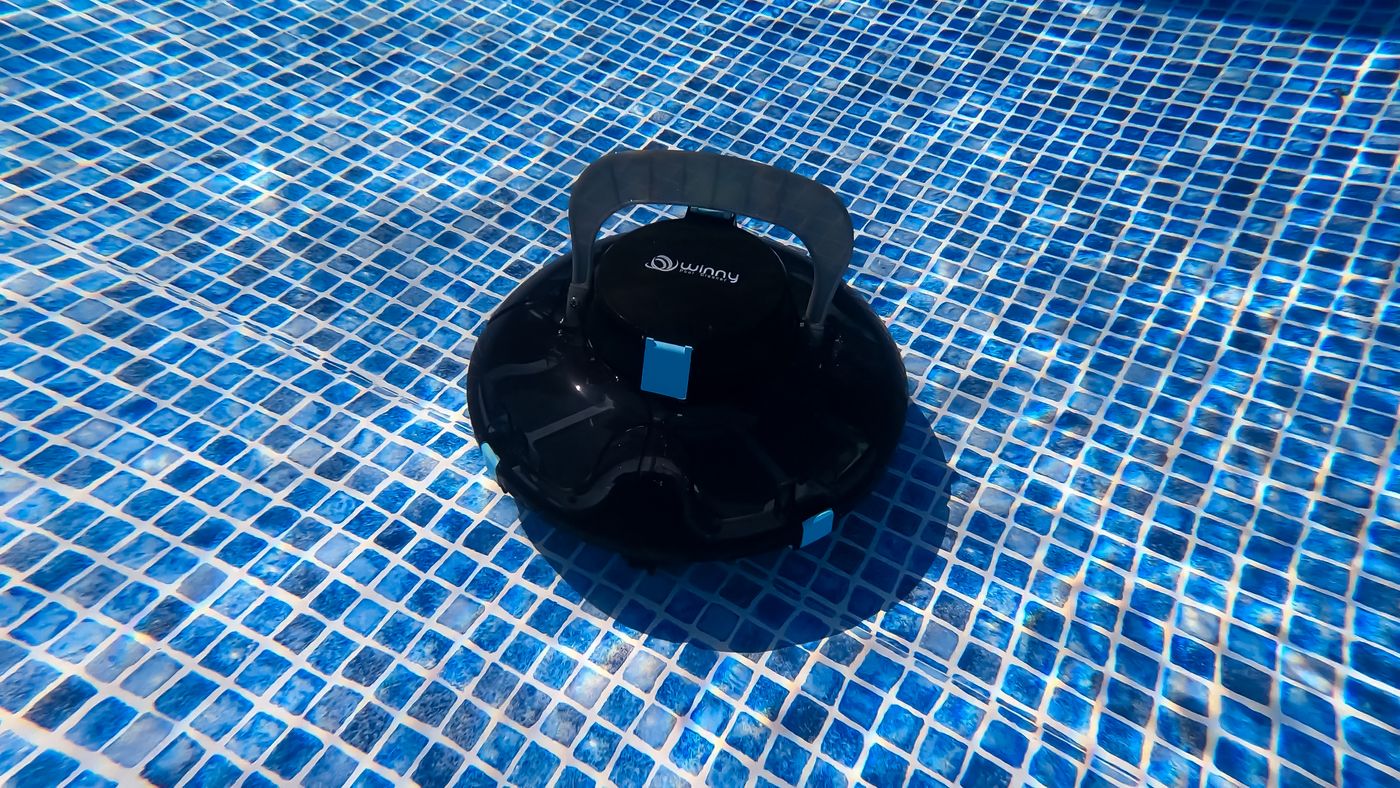
Some cordless models also reduce motor speed gradually, while others cut suction intermittently. So even if a manufacturer claims a specific GPH, it might only hit that number for a fraction of the run time.
Then there’s the mid-clean drop-off. Unlike corded models that run at full power from start to finish, cordless robots lose strength as their battery drains. What starts as a decent clean often turns into a sluggish, half-hearted scrub session toward the end. They don’t always have enough power left to climb walls properly, meaning they stop cleaning walls and waterlines when they need it most.
If you have a yard full of trees, this becomes an even bigger issue. Lighter debris might get picked up, but anything embedded—algae, grime, or buildup along the waterline—won’t budge. And guess what? That means you’re back out there with a brush, doing the work yourself.
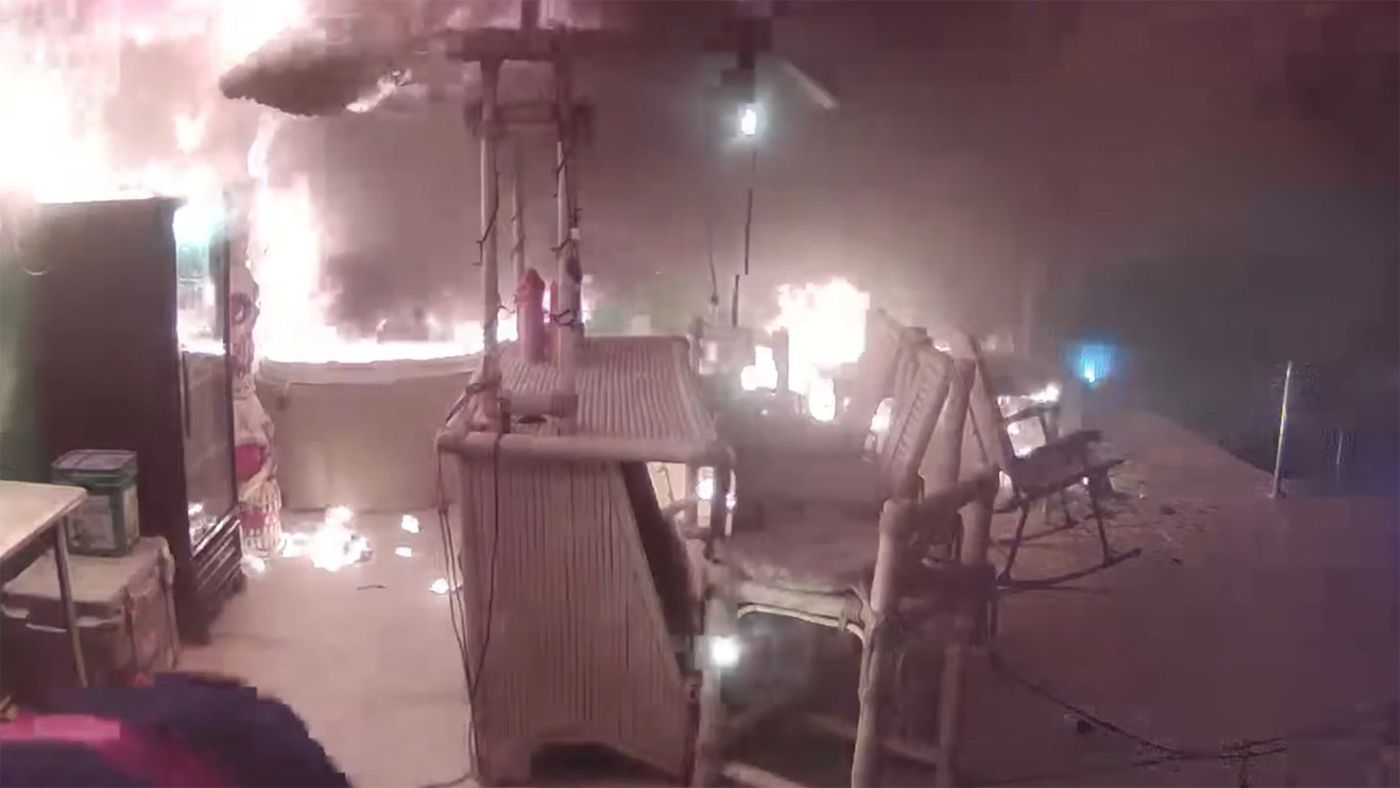
Safety Concerns
Pool safety isn’t just about preventing slips, falls, or drowning hazards—it extends to everything we trust to keep our pools clean. And when it comes to cordless robotic pool cleaners, there’s a growing concern that’s hard to ignore.
Alleged House Fire Linked to a Cordless Pool Cleaner
One Las Vegas family lost their home in a devastating house fire, leaving nothing but ash and memories behind.
The alleged cause? A cordless Aiper Seagull Pro robotic pool cleaner, left charging in their backyard. According to homeowner Bob Mosley, he claims he had plugged the device in like any other day. Hours later, his house was engulfed in flames.

Caught on camera, the fire reportedly started right in the backyard where allegedly the robot was charging. Bob later told Fox News 5, "I knew it was the pool cleaner cause I could see it on the video."
The footage, now circulating on YouTube and Facebook, is shocking—his house filled with smoke, his cat Pooka needing resuscitation by firefighters, and his home reduced to charred rubble.
Thankfully, everyone survived without injuries, but Bob’s story is a chilling reminder of the risks cordless robotic pool cleaners can pose.
And this isn’t an isolated incident. Additional videos online allegedly show other Aiper Seagull Pro models appearing to be engulfed in flames.
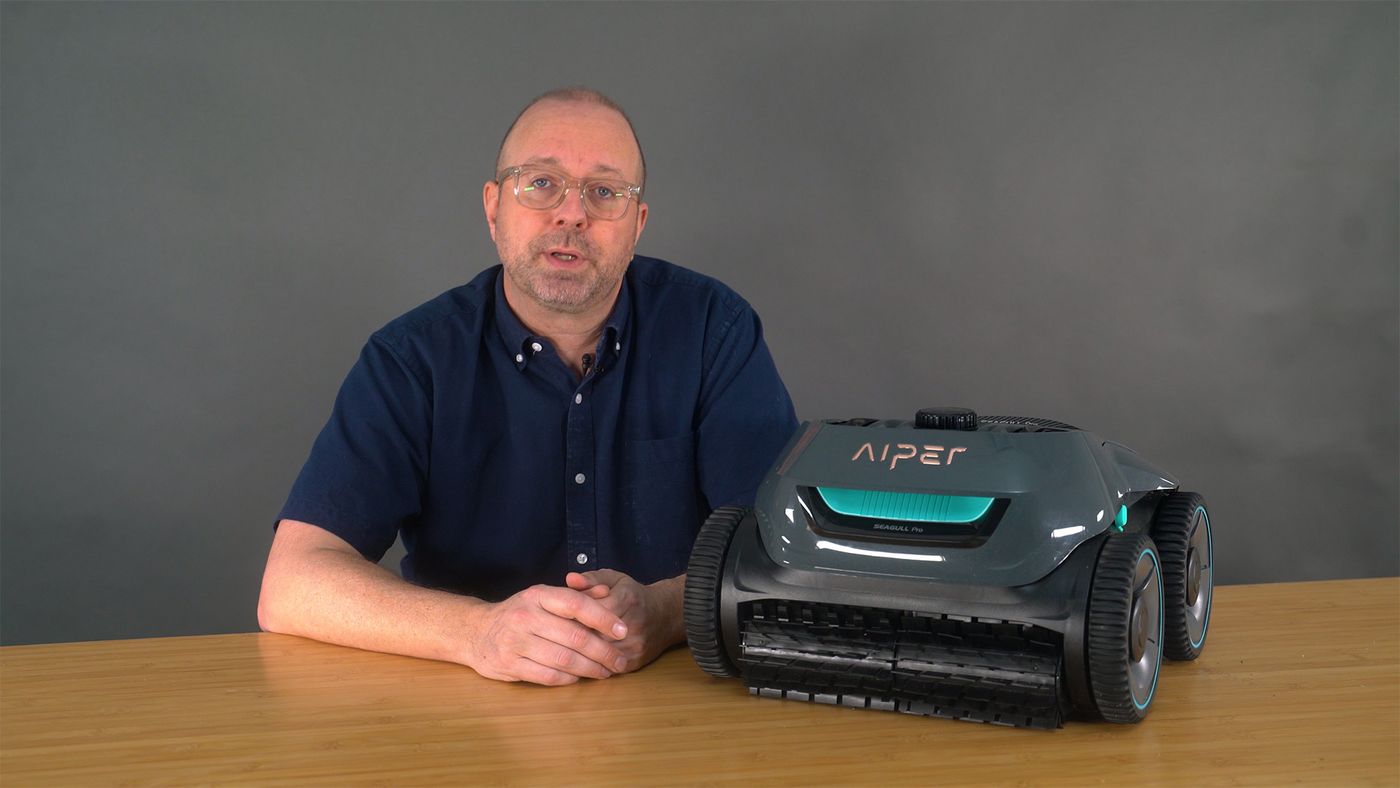
Lithium-Ion Battery Risks: The Hidden Danger
Cordless robotic pool cleaners rely on lithium-ion batteries, the same type found in electric cars, laptops, and smartphones. While these batteries are efficient and compact, they come with an inherent risk of overheating, catching fire, or even exploding—especially when exposed to water or heat.
In August 2023, the U.S. Consumer Product Safety Commission (CPSC) recalled 22,000 Aiper Elite Pro, another cordless model by Aiper, due to fire and burn hazards, after 17 reports of overheating, including an incident that caused a burn injury.
Inconvenience of Manual Charging and Retrieval
You’d expect a cordless cleaner to be simpler, but the manual charging process can become a chore. Every time the battery dies, you need to remove the cleaner, bring it to an outlet, and wait several hours before you can run it again.
If you’re someone who travels or isn’t around to babysit the cleaner every day, you lose out on the scheduling and automation benefits that many corded units offer. Ultimately, the manual process can feel more burdensome than simply managing a floating power cable that has a swivel.

Fakespot Reviews: A Reality Check for Cordless Pool Cleaners
This left me scratching my head. I saw so many glowing reviews on Amazon for cordless cleaners—so why didn’t these cordless pool robots perform like I expected?
If you’ve been following my content, you’ve probably seen my segment on Fakespot, an AI-driven tool created by Mozilla, the company behind the Firefox browser. Fakespot analyzes online reviews to detect patterns of potentially deceptive or unreliable feedback. According to its analysis, several major cordless brands—including Aiper, Beatbot, and Winny—have received low grades, including F ratings, based on detected review inconsistencies.
While this doesn’t necessarily mean all reviews are fake, it does indicate that a significant portion may be unreliable, making it harder for consumers to separate authentic experiences from possible marketing influence.
Cordless brands with poor Fakespot ratings frequently dominate best-seller lists, which might lead buyers to assume they’re superior—but review ratings don’t always equal product quality.
Meanwhile, established brands like Dolphin and Polaris, known for their high-performing corded models, continue to receive strong, verified reviews from real customers. If you’re relying on ratings to guide your purchase, it’s important to look beyond the stars and check review credibility tools like Fakespot—because a product that looks great on paper doesn’t always hold up in the real world.
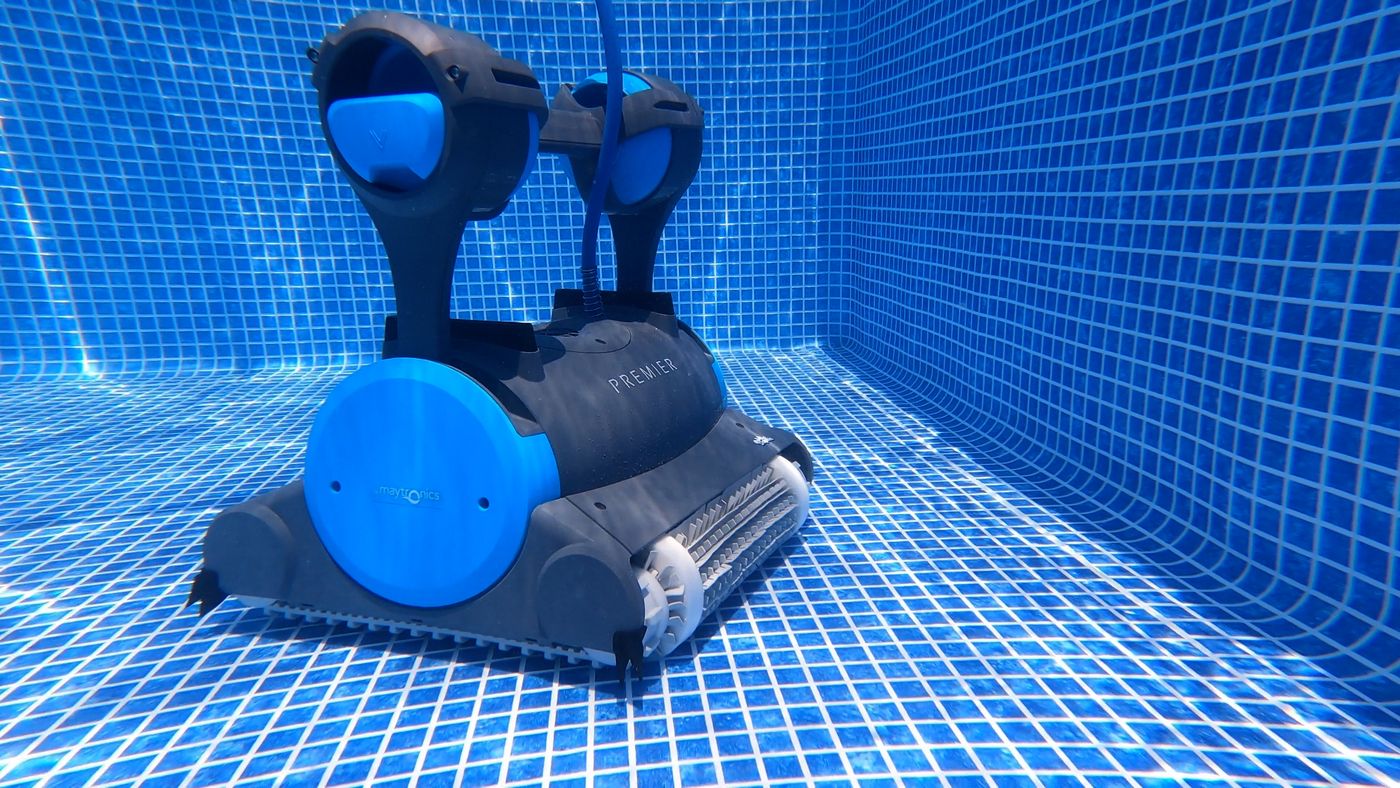
Why Corded Pool Cleaners Are Better
Corded robotic pool cleaners address all of the challenges that hold back their cordless counterparts. By plugging directly into an outlet, these robots can devote more energy to cleaning and provide constant power. All while being completely automated.
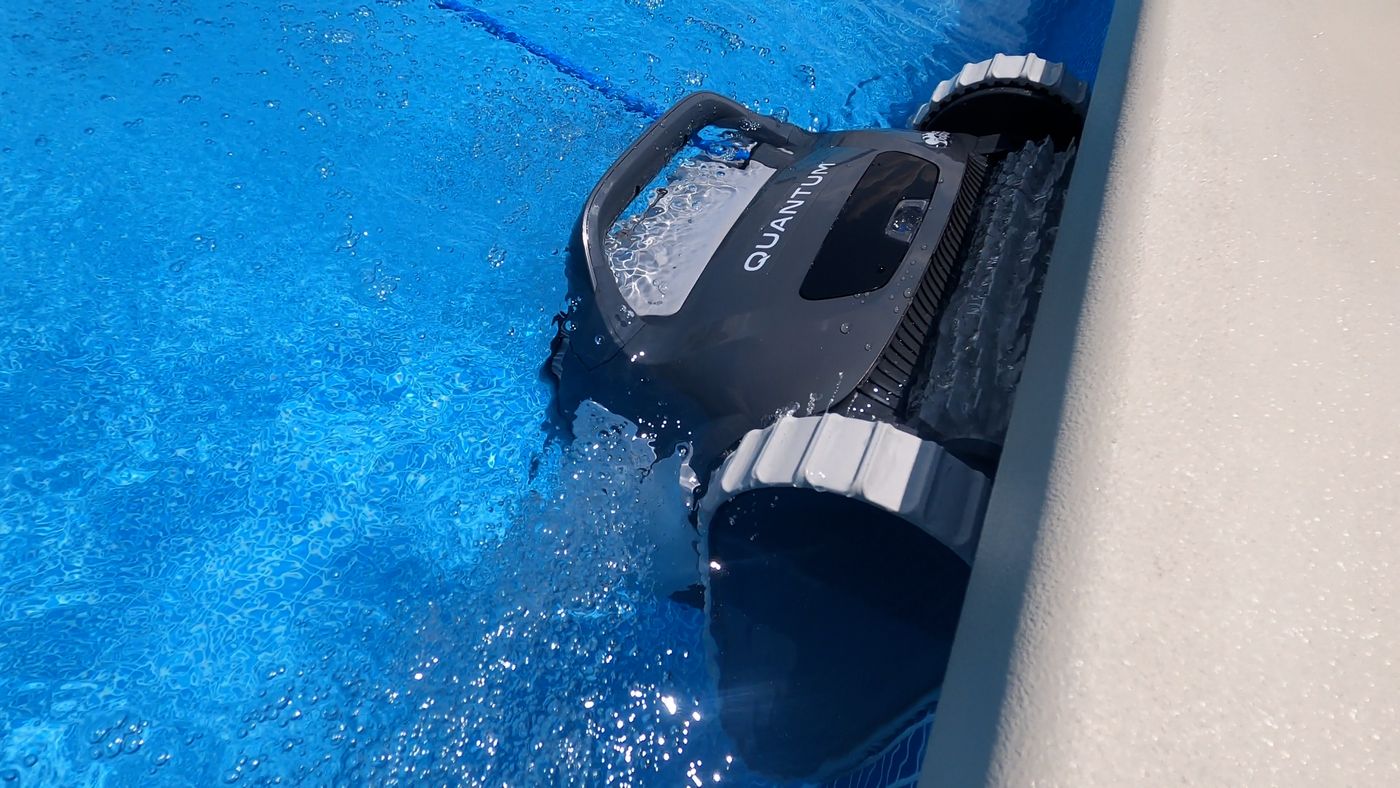
Consistent Power Supply: The Corded Advantage
The biggest game-changer when it comes to robotic pool cleaners? Consistent, uninterrupted power.
Corded models don’t rely on limited battery life, which means manufacturers can go all in on performance—equipping these cleaners with commercial-grade motors, stronger brushes, and smarter electronics that simply aren’t possible in cordless designs.
Take the Dolphin Premier and Dolphin Sigma, for example. These top robotic pool cleaners run on multiple commercial-grade motors and use advanced scanning software to ensure every inch of your pool gets the deep clean it deserves. With powerful scrubbing brushes and full-strength suction from start to finish, they don’t slow down mid-cycle like cordless ones I’ve tested.
Cleaning time is huge here: a corded cleaner can run for two to three hours straight, covering the entire pool in a single session. That means no half-done jobs, no waiting around for a mid-day recharge, and no babysitting the cleaner just to get a complete clean. Over the course of a week, that adds up to less work for you and a pool that stays in pristine condition—without constant intervention.
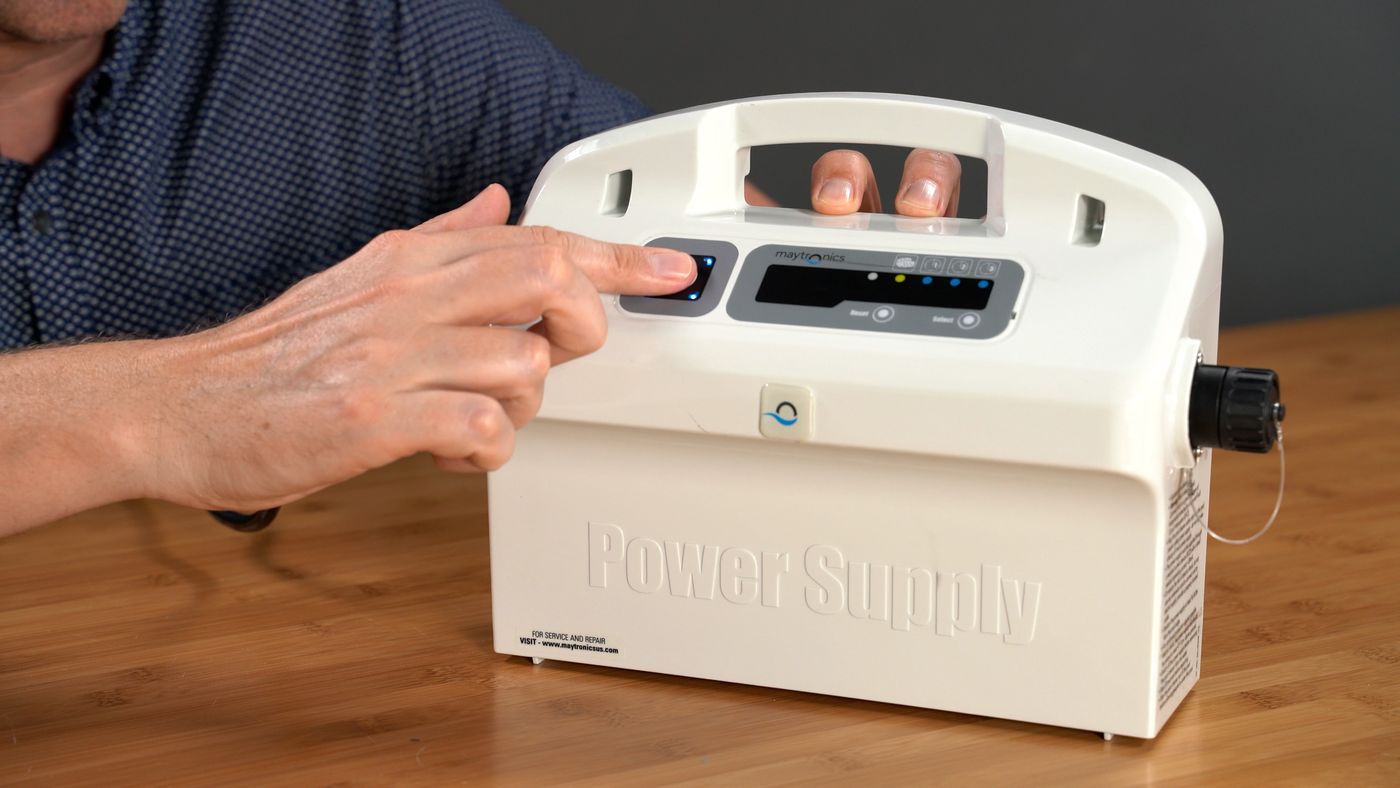
Set It and Forget It: Automated Scheduling with Weekly Smart Timers
One of the biggest perks of corded robotic pool cleaners is that they can actually run on autopilot.
Many models come with weekly timers or have an app where you can schedule when you want to clean, letting you schedule cleanings without ever lifting a finger. Want your pool to be cleaned at 5pm before you get home? It’s not a problem.
More advanced units, like the Dolphin Sigma, take it even further with advanced scheduling, app controls, and real-time monitoring—so you can start, stop, or adjust your cleaner from anywhere.
The best part? You only have to set it once. After that, your cleaner works on its own, keeping your pool in top shape without constant babysitting or mid-cycle recharges.

Filtration: A Cleaner Pool with Less Effort
A consistent power supply isn’t just about stronger motors—it also allows for better filtration.
Many models come equipped with filtration systems capable of capturing everything—from large leaves and bugs to microscopic contaminants like pollen, dust, and algae spores. If you’ve ever dealt with murky water, you know how frustrating it can be to constantly clean and shock your pool, only to have fine debris slip right through basic filters.
That’s where Nanofiltration comes in. These filters are made with ultra small pores to catch the smallest particles, trapping what other mesh filters miss. If you’re like me, once you see the difference, you’ll never go back. Your water will be visibly clearer, your chemical balance easier to maintain, and your pool just... fresher.
The Dolphin Premier’s Multi-Media even lets you swap filter media—use a leaf bag for heavy debris after a storm or fine cartridges to polish the water and trap tiny particles. There’s even a disposable debris bag that eliminates the need to clean altogether.
And here’s where it really makes a difference: your pool’s overall health.
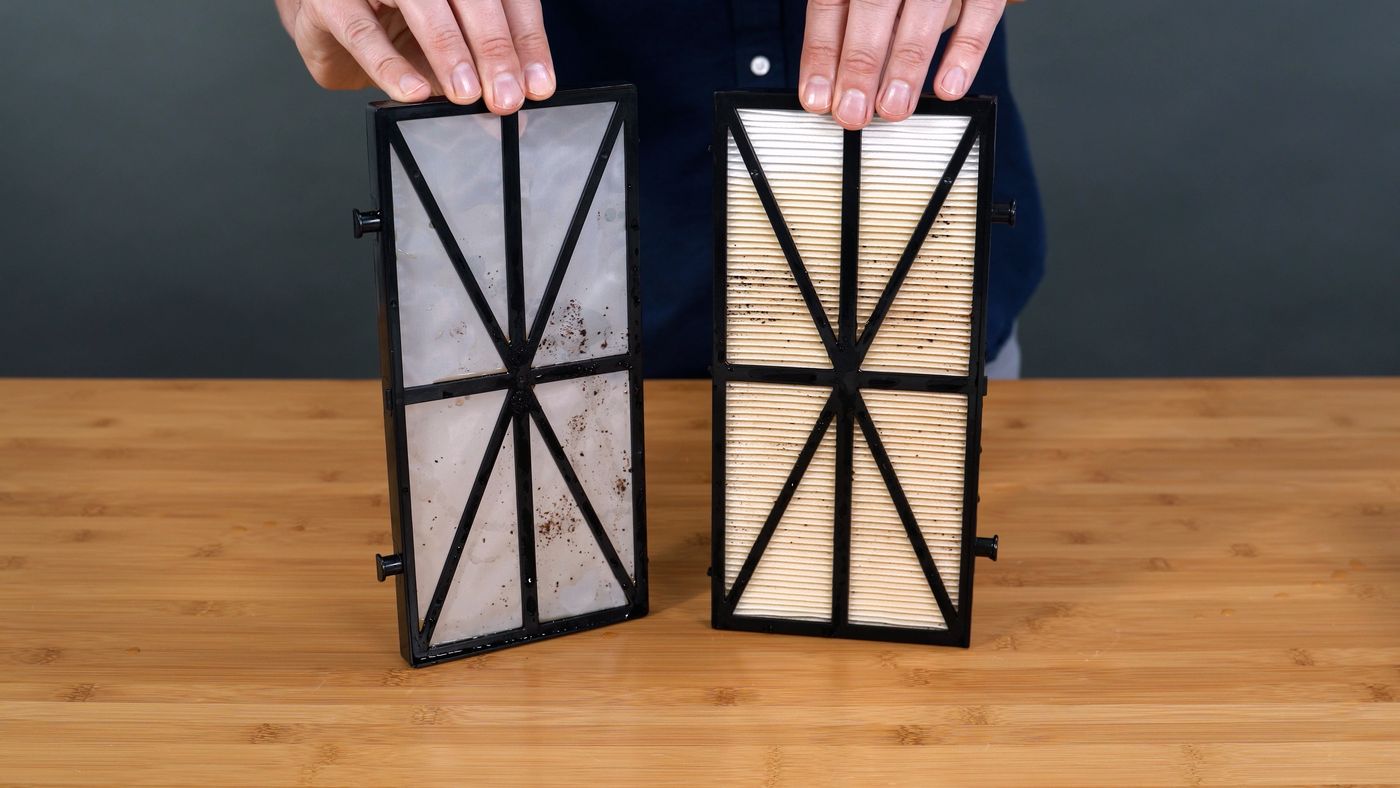
By pulling out more debris before it ever reaches your main filtration system, a robotic cleaner reduces strain on your pool pump and filter, leading to:
- Better water circulation
- Fewer chemical imbalances
- Less frequent backwashing (which saves water and time)
- Lower operational costs
With superior filtration built right into the cleaner, your main pool system works less, your water stays clearer, and you spend less time maintaining it. That’s something cordless models just can’t compete with.

Superior Cleaning Performance
If you want a truly deep clean, corded robotic pool cleaners are in a league of their own.
With powerful rotating brushes that scrub algae off walls, advanced scanning technology that optimizes travel paths, and high-traction climbing ability, these cleaners tackle dirt and debris far more effectively than their cordless counterparts. Unlike battery-powered robots that weaken over time, corded models maintain full power throughout the entire cleaning cycle—so your pool gets a thorough, wall-to-wall scrub every time.
And here’s the game-changer: multiple motors.
Many high-end corded cleaners, like the Dolphin Sigma, feature triple commercial-grade motors that allow them to pivot, maneuver, and cling to walls with precision—something most single-motor cordless models just can’t do. This means better waterline scrubbing, fewer missed spots, and an overall deeper clean.
Since corded robots don’t have to conserve battery life, they don’t rush through their cleaning cycles or cut corners. Instead, they methodically scrub every inch of your pool, reducing the risk of algae buildup and even disrupting biofilm—the slimy layer where bacteria thrive.
Corded Robots I Recommend
Here’s my top picks for the best corded cleaners if you want to make the switch.
1. Dolphin Premier
The Ultimate in Customizable Filtration & Heavy-Duty Cleaning
The Dolphin Premier is built for pool owners who demand top-tier performance and versatile filtration. Featuring MultiMedia™ filtration, it offers interchangeable filter options—an oversized leaf bag for large debris, standard cartridges for fine dirt, and NanoFilters for ultra-fine particles like pollen and algae spores.
With its included Weekly Smart Timer and Media-Alert, you can schedule it to clean daily—and it will even let you know when it's time to clean its filters.

Its dual HyperBrush™ scrubbing system actively lifts and agitates stubborn grime, attacking algae and biofilm that other cleaners skim over. The powerful 4,500 GPH suction ensures debris doesn’t just get brushed off—it gets completely removed from your pool. Designed with SmartNav™ 2.0 mapping technology, the Premier cleans efficiently and methodically, avoiding wasted movement and ensuring full coverage. Built with commercial-grade durability, it’s a workhorse for high-use pools.
Read my full review on the Premier →
2. Dolphin Cayman
Lightweight, Budget-Friendly, & Surprisingly Powerful
For those looking for a budget-conscious robotic cleaner without sacrificing cleaning power, the Dolphin Cayman is an easy favorite. Also with an included Weekly Timer, it can fully automate your pool cleaning routine. Its HyperBrush™ single scrubbing system spins twice as fast as standard brushes, making it highly effective at removing stuck-on dirt and algae.

Despite its lightweight design, the Cayman packs a punch, using HyperGrip™ tracks to maintain strong traction on pool surfaces, including walls. The top-loading MaxBin™ filter makes debris removal effortless, perfect for first-time robotic pool cleaner owners. It’s a fantastic option for medium-sized pools looking for a balance between affordability and performance.
Read my full review on the Cayman →
3. Dolphin Sigma
Triple Motors, Precision Navigation & Unrivaled Power
The Dolphin Sigma is an engineering powerhouse, featuring three commercial-grade DC motors that deliver unmatched maneuverability, suction, and wall-climbing capability. Unlike traditional models, Sigma’s SmartNav™ 3.0 AI mapping system scans and calculates the most efficient cleaning path, minimizing redundant passes and ensuring every inch of your pool is covered.
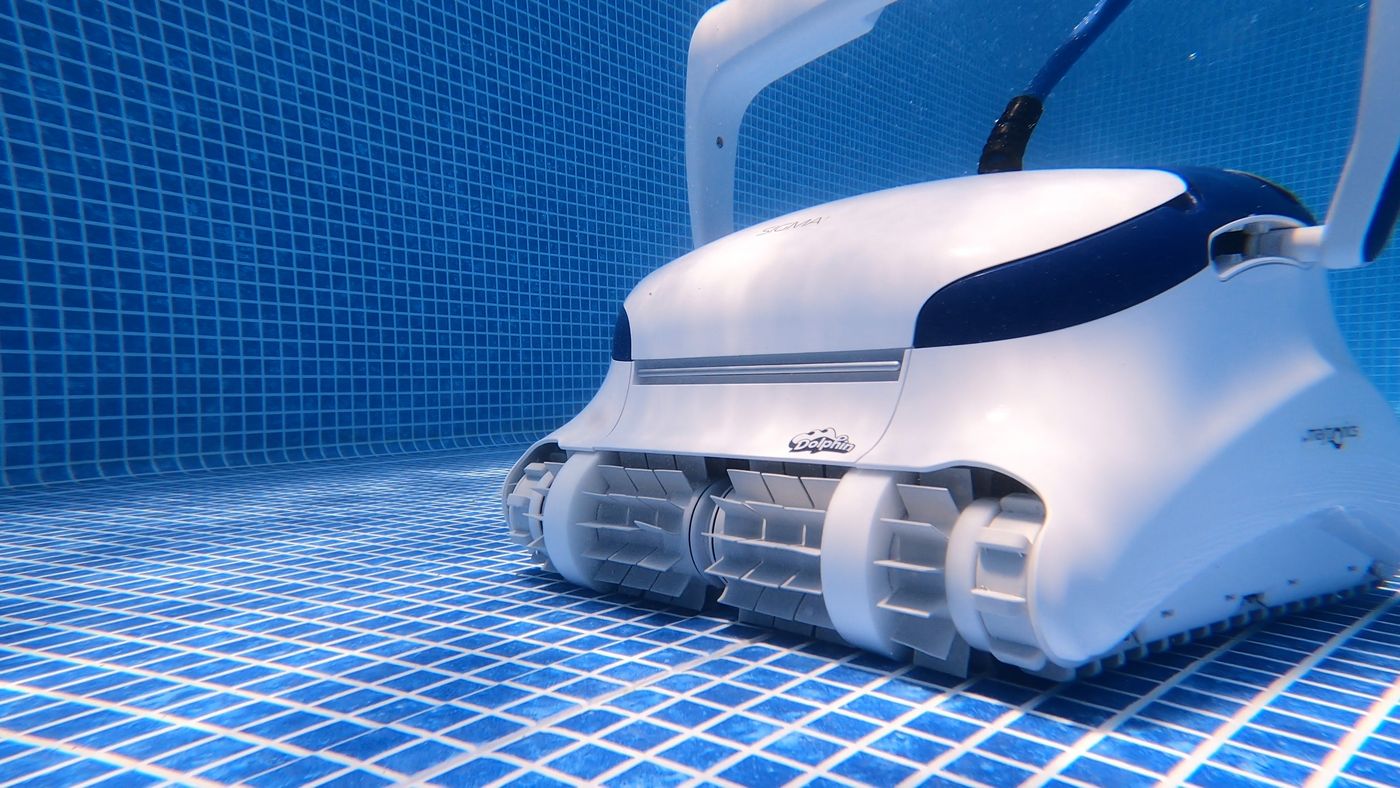
Equipped with dual NanoFilters, the Sigma captures everything from large debris to microscopic contaminants, making it perfect for high-traffic pools or those prone to algae. Its waterline scrubbing is among the best in its class, thanks to its quad brush system and 360° pinpoint turning ability, allowing it to clean corners, steps, and tricky pool features with ease.

With the myDolphin Plus app, you can schedule your pool cleanings right from your phone. And you can even drive it directly from your phone—allowing you to control and target problem areas in your pool.
Read my full review on the Sigma →
If You Still Want a Cordless Cleaner, Here Are the Best I’ve Tested
For specific scenarios—like if you have no way to get an extension cord or power out to your pool—you may still want a cordless robotic pool cleaner. So here are two of my favorites.
1. Dolphin Liberty – Compact, Convenient, and Cordless Freedom
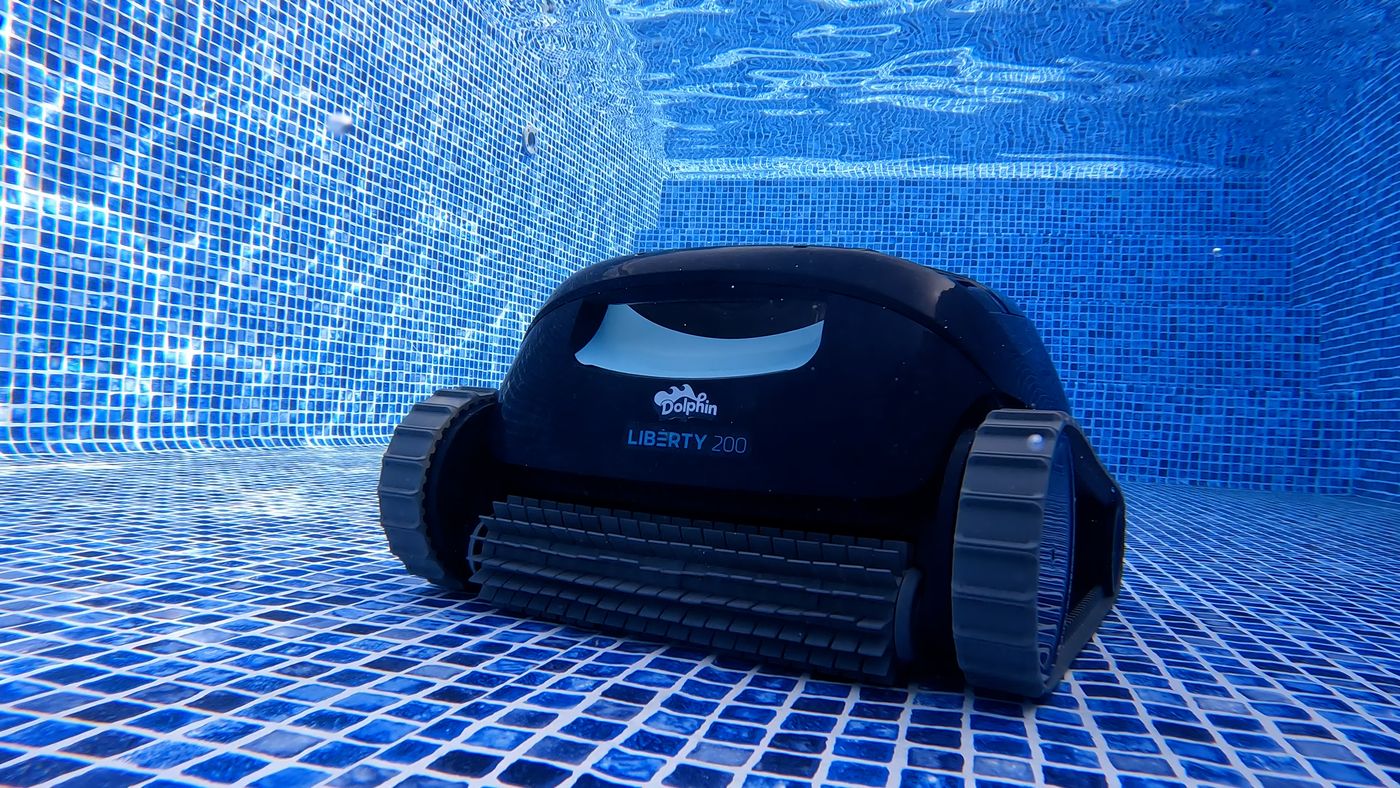
The Dolphin Liberty is a lightweight, easy-to-use cordless robotic cleaner designed for smaller pools or those looking for a hassle-free setup.
The active scrubbing brush helps loosen dirt and debris, and its quick-charge battery system gets it back in action faster than many other cordless units.
That said, it does share the typical limitations of cordless models—reduced suction power compared to corded Dolphins and manual retrieval after each use. But if you have a smaller pool and prefer the flexibility of cordless cleaning, the Dolphin Liberty is one of the more capable and well-built options in its class.
Read my full review on the Sigma →
2. Polaris Freedom – Extended Runtime & Enhanced Usability
The Polaris Freedom offers a step up in battery runtime, making it one of the more efficient cordless pool cleaners available. But, it comes at a hefty $1400 price tag.
While it didn’t live up to the Dolphin Premier or Sigma, it is a solid cleaner overall. While we didn’t love the constant recharging, it was better than other cordless models I’ve tested.
With a strong motor for its category, the Polaris Freedom effectively picks up light to moderate debris, including small leaves, dirt, and fine particles. Unlike some budget cordless models, Freedom provides wall-climbing, making it one of the better choices if you’re going cordless.
Of course, as with any battery-powered cleaner, suction and scrubbing power gradually fade as the battery drains. It may require additional cycles for complete coverage in larger pools.
However, for those committed to a cordless cleaner, the Polaris Freedom delivers one of the best balances of power, runtime, and ease of use, making it a top pick for those still wanting a cordless pool cleaner.
Other Brands I’ve Tested
- Aiper: A Chinese brand known for budget-friendly options, though some models have faced recalls due to battery safety and performance concerns. Their warranties and customer service vary, so it pays to research thoroughly.
- Beatbot: Another Chinese brand which claims multiple new technologies, but results are inconsistent, plus durability and customer support can be spotty.
My Final Verdict
So what’s my final verdict on the best cordless pool cleaners?
Avoid them and go corded.
Cordless pool cleaners may offer the novelty of tangle-free operation, but their short battery life, reduced suction power, and potential fire risks often outweigh the convenience. Most pool owners quickly realize that corded models provide a more reliable, powerful, and worry-free cleaning experience—with better suction, longer run times, and advanced features like automated scheduling and high-efficiency filtration.
That said, if you have a small pool that doesn’t see significant leaves and debris, a cordless model like the Dolphin Liberty or Polaris Freedom could work ok for you. But for larger pools, high-debris areas, or owners who expect top-tier performance, the Dolphin Premier, Dolphin Cayman, and Dolphin Sigma stand out as best-in-class corded options. Their constant power source, commercial-grade motors, and precise coverage make all the difference—especially when dealing with leaves, dirt, or stubborn algae buildup.
At the end of the day, the best choice depends on your pool size, debris load, budget, and how much hands-on maintenance you’re willing to do. If you want reliable, hassle-free cleaning with minimal intervention and long-term cost savings, a corded unit is the clear winner.
If you wanna keep nerding out over your pool, head on over to my website at ThePoolNerd.com/Deals where I post the best deals, news, reviews, and comparisons on the top robotic pool cleaners and other pool equipment.
Your resident pool aficionado.
For over 5+ years, The Pool Nerd has been a leading source in the swimming pool industry. With years of experince owning a swimming pool, our hope here is to guide and help making owning a swimming pool easier.
